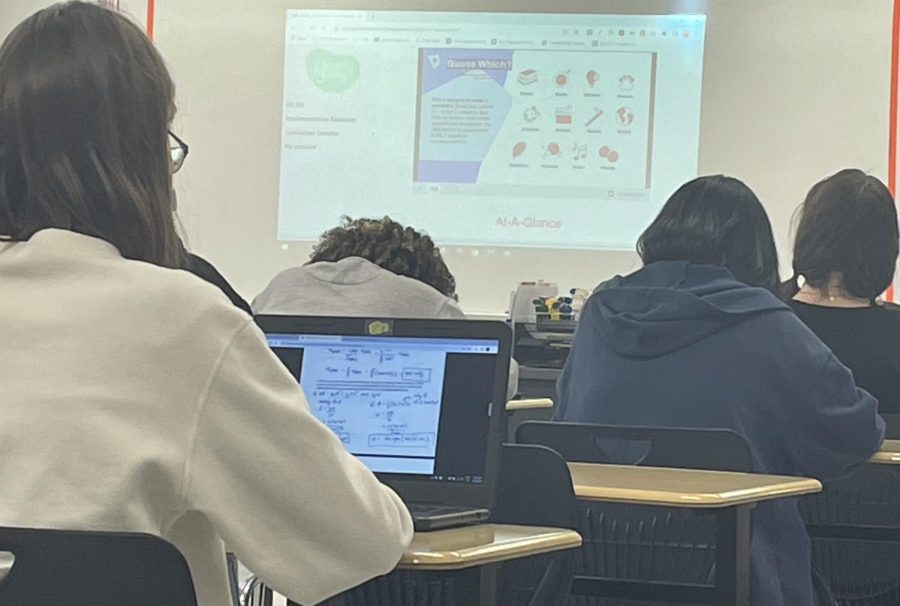Mindfulness fails to mind students’ mental health
“I know several teachers that are strong with the actual social and emotional development of their students, who say at the beginning of their [CharacterStrong] lessons that they know these won’t be helpful” – senior Emily Hemlinger
Photo courtesy of Robbie Kugler
A typical CharacterStrong lesson might include this sort of picture guessing game in order to spark creativity and cooperation. Students, however, would much rather use LS 4 to catch up on homework.
WS decided to change their Learning Seminar schedule, with LS 4 now being every blue day. A new mindfulness program, CharacterStrong, is also being taught by teachers one day a week, but the new mindfulness program does more harm than good. The slideshows shown are meaningless to students, and with the time during LS 4 being wasted, students are given less time to complete work, adding to the stress that is the reason the program would be needed in the first place.
Marketing Education Teacher Samantha Jonsson is one of three staff members who are points of contact for the program.
“Our hope is that students will gain coping skills, connect with others, and learn where to seek support and how to support others,” said Jonsson. She admits that benefits may differ from student to student.
Despite the benefits that Jonsson wishes the program to have, students largely do not find it to be beneficial. Out of 234 students surveyed, 42 percent said that their teacher does not teach the lessons. Of the same 234 students, 95 percent felt that there was no benefit coming from the mindfulness program. Students may be complaining about the amount of stress that comes with school, but they obviously find that this is not the solution to that problem.
If this is how students feel about the use of LS 4, one wonders how teachers might feel about this change to their blue day schedules.
“Teachers are prepared to handle lessons regarding social and emotional learning,” said Jonnson.
Despite this belief, an anonymous teacher survey with 21 responses shows that 71 percent do not feel they are certified to teach Social and Emotional Learning (SEL) lessons. Because teachers do not feel like they should be teaching this program, 52 percent partially have their students participate in the program, while 14 percent are not playing the slideshows at all.
Jonsson said that the license for this program cost $3,999, with that money coming from the Elementary and Secondary School Emergency Relief Fund (ESSER) and the SEL/Wellness funds. With many teachers avoiding giving their students the presentations, is this really the best use of this money? If we decide to do this next year, students will become even more unengaged, proving this to be an even bigger waste of money.
With the student and teacher feedback being overwhelmingly negative, it is obvious that this program was not the right choice. Before the change, students found the time to do their work during LS important, and it allowed them to have time to get work done, which lowers stress. WS should not choose to continue to use the CharacterStrong program next year, as most students find the content laughable, and it is a waste of time that they could be using to socialize or finish their work.






